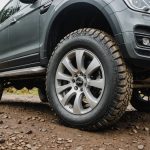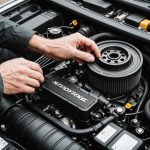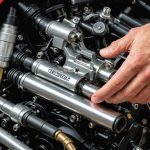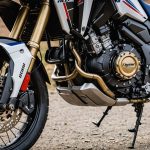Unlocking Optimal Traction: Crucial Wheel Alignment Techniques for Your British Off-Road Adventure
When venturing into the rugged terrains of the British countryside, whether in a Land Rover Defender, a Jeep Wrangler, or any other off-road vehicle, ensuring optimal wheel alignment is paramount for both performance and safety. Here’s a comprehensive guide to help you understand and achieve the perfect wheel alignment for your off-road adventures.
Understanding the Importance of Wheel Alignment
Wheel alignment is often overlooked, but it is a critical aspect of maintaining your vehicle’s performance, safety, and the longevity of its components. Proper alignment ensures that your tires wear evenly, which can significantly extend their lifespan and improve your vehicle’s handling on various terrains.
This might interest you : Illuminate your classic british ride: the transformative benefits of upgrading to led headlights
Why Alignment Matters
- Tire Longevity: Misaligned wheels can lead to uneven tire wear, reducing the life of your tires and increasing the need for frequent replacements. Proper alignment ensures that the load is distributed evenly across the tire surface, prolonging its life[5].
- Performance: Alignment affects how your vehicle handles on the road. Misaligned wheels can cause your vehicle to pull to one side, making it difficult to steer and control, especially in challenging off-road conditions.
- Safety: Incorrect alignment can compromise your vehicle’s stability and braking performance. This is particularly dangerous when driving on slippery or uneven terrains, where precise control is crucial.
- Fuel Efficiency: Properly aligned wheels can also improve fuel efficiency by reducing the drag and resistance caused by misaligned tires.
Assessing Your Vehicle’s Needs
Before diving into the specifics of wheel alignment, it’s essential to understand your vehicle’s unique needs and the terrains you’ll be tackling.
Terrain and Usage
- Rocky Terrains: If you’re planning to drive on rocky trails, you’ll need a more robust suspension system and precise wheel alignment to handle the uneven surfaces.
- Mud and Sand: For muddy or sandy areas, wider tires with the correct offset and alignment are crucial for better traction and stability[3].
Load Requirements
- Additional Weight: If you’re carrying camping gear, recovery equipment, or towing, you need to ensure your lift kit and wheel alignment can handle the extra weight. This might require adjustments to your suspension and steering systems[3].
Types of Wheel Alignment
Wheel alignment involves several key parameters that need to be adjusted to ensure your vehicle stands up to the demands of off-road driving.
Also read : Ultimate guide to authenticating replacement parts for british classic cars: ensuring unmatched quality
Camber, Caster, and Toe
- Camber: This refers to the angle of the wheels relative to the vertical plane. Proper camber ensures even tire wear and improves handling.
- Positive Camber: Wheels tilt outward.
- Negative Camber: Wheels tilt inward.
- Zero Camber: Wheels are perfectly vertical.
- Caster: This is the angle of the steering axis relative to the vertical plane. Correct caster ensures stable steering and proper return to center.
- Toe: This is the direction the wheels point relative to the centerline of the vehicle. Proper toe alignment prevents uneven tire wear and improves handling.
How to Check Alignment
Here are some practical steps to check and adjust your wheel alignment:
- Use Calipers or Specialized Gauges: Measure the existing components accurately to ensure the spacers and wheels fit perfectly[1].
- Test Spinners or Fitment Templates: Use these tools to physically test how spacers will fit before committing to installation[1].
- Consult a Professional: If you’re unsure, seek advice from an experienced mechanic or wheel expert.
Adjusting for Off-Road Modifications
Off-road adventures often involve modifications to your vehicle, such as lift kits and larger tires, which can affect wheel alignment.
Lift Kits and Wheel Compatibility
- Lift Height Compatibility: The height of your lift kit should correspond with the size of your wheels to maintain proper ground clearance and avoid rubbing against the wheel wells[3].
- Wheel Size and Offset: Selecting wheels with the appropriate diameter, width, and offset is crucial. Larger wheels can enhance ground clearance and traction but must be compatible with your lift kit[3].
Suspension and Steering Upgrades
- Enhanced Suspension Systems: Invest in advanced suspension systems that offer improved shock absorption and stability. This is particularly important when navigating uneven terrains or steep inclines[3].
- Steering Modifications: Consider steering modifications that provide greater precision and responsiveness. Enhanced steering systems contribute to better maneuverability and control, especially in challenging off-road conditions[3].
Practical Tips for Maintaining Optimal Alignment
Here are some practical tips to ensure your wheels remain aligned and your vehicle performs optimally:
Regular Checks
- After Off-Road Trips: Always check your wheel alignment after a rigorous off-road trip to ensure no adjustments are needed.
- Seasonal Checks: Perform seasonal checks to account for any changes in road conditions or vehicle usage.
Maintenance Routine
- Tire Pressure: Ensure your tire pressure is at the recommended level for the terrain you’re driving on. Proper tire pressure can affect alignment and overall performance[3].
- Disc Brakes: Regularly inspect and maintain your disc brakes, as improper brake function can affect wheel alignment and safety.
- Suspension Components: Regularly inspect and replace suspension components if necessary to maintain optimal alignment and performance.
Common Signs of Misalignment
Recognizing the signs of misalignment can help you address issues before they become major problems.
Uneven Tire Wear
- Feathering: Tires that wear more on one side than the other.
- Cupping: Tires that wear in a cup-like pattern.
- Bald Spots: Tires with bald spots indicate severe misalignment.
Handling Issues
- Pulling to One Side: If your vehicle pulls to one side while driving, it could be a sign of misaligned wheels.
- Vibration: Vibration while driving, especially at high speeds, can indicate misalignment.
Other Signs
- Abnormal Noises: Unusual noises from the wheels or suspension can indicate misalignment.
- Reduced Fuel Efficiency: Misaligned wheels can lead to reduced fuel efficiency due to increased drag and resistance.
Real-World Examples and Anecdotes
Land Rover Defender
The Land Rover Defender, a classic off-road vehicle, requires precise wheel alignment to handle its rugged capabilities. A misaligned Defender can struggle on rocky terrains and muddy paths, compromising both performance and safety. Here’s what Mike Ettore, an automotive expert, has to say:
“Correct sizing ensures that the load stresses are appropriately distributed across the wheel assembly, which is vital for the longevity of suspension components and the overall handling of your car. This is especially true for vehicles like the Land Rover Defender, which are designed to tackle the toughest terrains”[1].
Jeep Wrangler
For a Jeep Wrangler, which is known for its versatility and off-road prowess, maintaining optimal wheel alignment is crucial. Here’s an example from an off-road enthusiast:
“I once took my Jeep Wrangler on a muddy trail without checking the alignment after a recent lift kit installation. The vehicle pulled to one side, and I had to stop frequently to adjust. After getting it properly aligned, the difference was night and day. The Wrangler handled smoothly, and I could tackle the terrain with confidence.”
Achieving optimal wheel alignment is a critical step in preparing your vehicle for off-road adventures. Whether you’re driving a Land Rover Defender, a Jeep Wrangler, or any other road vehicle, understanding the importance of alignment, assessing your vehicle’s needs, and making the necessary adjustments can significantly enhance your performance, safety, and overall driving experience.
Summary Table: Key Alignment Parameters
| Parameter | Description | Importance |
|---|---|---|
| Camber | Angle of the wheels relative to the vertical plane | Ensures even tire wear and improves handling |
| Caster | Angle of the steering axis relative to the vertical plane | Ensures stable steering and proper return to center |
| Toe | Direction the wheels point relative to the centerline of the vehicle | Prevents uneven tire wear and improves handling |
| Lift Height | Height of the lift kit corresponding with wheel size | Maintains proper ground clearance and avoids rubbing against wheel wells |
| Wheel Size and Offset | Selecting wheels with appropriate diameter, width, and offset | Enhances ground clearance and traction, ensures compatibility with lift kit |
Detailed Checklist for Wheel Alignment
- Measure Existing Components: Use calipers or specialized gauges to measure existing components accurately.
- Check Camber, Caster, and Toe: Ensure these parameters are within the recommended specifications.
- Test Fitment: Use test spinners or fitment templates to physically test how spacers will fit.
- Consult a Professional: If unsure, seek advice from an experienced mechanic or wheel expert.
- Regular Checks: Perform regular checks after off-road trips and seasonally.
- Maintain Tire Pressure: Ensure tire pressure is at the recommended level for the terrain.
- Inspect Suspension Components: Regularly inspect and replace suspension components if necessary.
- Check for Signs of Misalignment: Look for uneven tire wear, handling issues, abnormal noises, and reduced fuel efficiency.
By following these guidelines and maintaining optimal wheel alignment, you can ensure your vehicle stands ready for any off-road adventure, whether it’s navigating the muddy trails of the British countryside or conquering the rocky terrains of the Scottish Highlands. Happy trails











